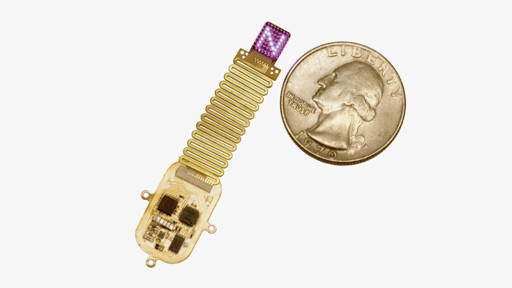Robots in healthcare aren't limited to the surgical da Vinci system. In hospitals and care homes, robotic nurses, robots for dementia patients, and even massage robots are already employed. Could they be the solution to the staffing crisis in healthcare and help care for an aging population?
Robots will become as common as washing machines
Robear, a robot resembling a friendly panda, was the first designed to assist nurses with physically demanding tasks such as transferring patients from bed to wheelchair or changing bed linens. In a video published by its creators, Robear can be seen lifting a patient gently, slowly, and effortlessly using its two arms. It’s no coincidence that Robear was developed in Japan, where a rapidly aging society is a ticking demographic time bomb. According to estimates, by 2040, Japan will face a shortage of 570,000 healthcare workers needed to care for the elderly. Robots are expected to fill that gap. However, Robear won't be among them. Developed in 2015, the robot prototype was never mass-produced because it was too slow and had limited mobility. Ultimately, it proved more of a hindrance than a help.
Since then, ten years have passed, and robotics has advanced significantly. Progress in artificial intelligence has enabled robots to work in warehouses, and the first multifunctional home-use robots, like Rosie from The Jetsons cartoon, are on the horizon. Tech giants such as Tesla and NVIDIA are racing to dominate this emerging market. Elon Musk predicts that while Rosie-like robots may still be a decade or two away, Tesla will produce one million of its Optimus robots by 2030. Today, videos of Optimus dancing like a human or Digit carrying packages in a warehouse are so impressive that it feels like the robotics revolution is just around the corner.
In healthcare, however, robotics remains primarily the domain of smaller companies due to strict regulatory barriers and high safety requirements. Still, there are a number of promising prototypes and advanced technologies making headway.
Surgical robots. A scalpel in an extremely precise hand
Medical robots are most commonly associated with surgical robots, which have been on the market for nearly 25 years. The most well-known is the da Vinci Surgical System by Intuitive, which assists surgeons during urological, gynecological, oncological, and general surgeries.
According to the manufacturer, 9,000 of these robots are currently in use worldwide, having performed over 15 million surgeries in total. To mark its 25th anniversary, Intuitive launched the latest version, da Vinci 5, featuring enhanced tools, 3D imaging, and an AI system that simulates tissue resistance, giving surgeons the tactile feedback of using a scalpel.
Da Vinci 5 introduces another key feature that hints at the future of surgical robotics: it can record data about each procedure, enabling the system to improve its skills and eventually support more autonomous, AI-driven movements. Data collected from millions of procedures, when combined with surgical outcomes tracked in electronic medical records, is the next big step toward semi-autonomous surgeries
Robots helping nurses. Where the humans are irreplaceable
The friendly robot Moxi can deliver supplies and medications from storage and transport blood samples to the lab. By handling such basic routine tasks, Moxi frees up nurses’ time: By February 2025, such robots employed in U.S. hospitals had completed over 1 million deliveries, covering 1.5 billion steps that nurses didn’t have to take. It’s already a big win.
Hospi, a delivery robot developed by Panasonic, works on similar principles, autonomously transporting medicines and lab samples within hospitals. Moxi and Hospi are still exceptions, because robots assisting healthcare personnel are relatively rare. The first to be employed in a hospital was Pepper, who welcomed patients at reception and provided directions to specific departments. Programmable for many tasks, Pepper also worked in care homes, hotel lobbies, and corporate receptions. However, production was halted in 2021 due to low demand.
Nevertheless, more hospital-ready machines are on the way. Mirokai, a robot that moves by balancing on a ball like a Segway, is designed to deliver meals and entertain patients. Interestingly, support doesn’t always require full robots. For instance, Apogee Ultra, a new lightweight exoskeleton for nurses, provides active lifting support of up to 36 kg, greatly aiding in repositioning patients.
Still, robots have their limits, and many tasks are just too complex for even the most advanced machines. For example, putting a hospital gown on a patient. A study by Imperial College London showed that although a robot completed this task in 90.2% of attempts, it took significantly more time than a human. Notably, for safety reasons, the test was not performed on a living person.
On the other hand, in robotics, almost anything is possible, and robots are beginning to enter areas traditionally reserved for humans, such as rehabilitation. The Aescape system scans the body and tailors massages to individual preferences, including customizable 'hand' temperatures. It also offers a more affordable alternative to human masseurs.
Robots as mood boosters and companions. Better than loneliness
The robotic seal Paro quickly gained popularity in nursing homes for patients with dementia and Alzheimer's. It closely mimics a real animal, responding to touch with gentle purring sounds. Scientific studies confirm its therapeutic benefits: Paro boosts patients' moods, stimulates social interactions, and brings smiles to their faces. The fact that it’s a robot doesn’t matter; the positive effect does.
Jenny, a plush robotic dog, was similarly designed for patients with degenerative brain diseases. Paro and Jenny serve as replacements for real animals, which are often not allowed in care homes for hygiene reasons.
An aging population, rising numbers of patients with neurodegenerative diseases, and an epidemic of loneliness among seniors are driving demand for robots like Paro and Jenny. These robots are invaluable companions for people with disabilities who, due to cognitive or mobility issues, cannot care for a living pet. Thanks to AI, they are no longer just mechanical toys, but multifunctional helpers capable of interactive conversation and emotional support.
Some view medical robots as a symptom of a social and ethical crisis, where fewer people are willing to care for patients or lonely seniors. That concern is valid. But ultimately, the use of these robots should be judged by a single measure: the well-being of the patient. Patients often embrace these robots, not because they’re a “worse alternative” to human care, but because they bring joy and comfort into their lives.







